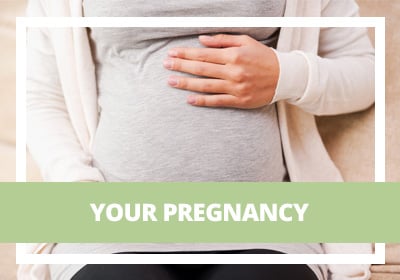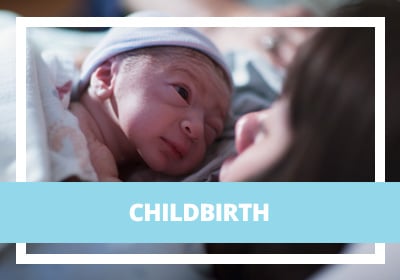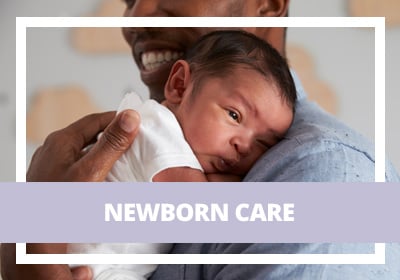Cosleeping

Many people use the terms "bed-sharing" and "co-sleeping" to describe the same thing, but there are differences. Co-sleeping is when a parent and child sleep in close social or physical contact of each other, meaning that each can tell that the other is nearby. Room-sharing and bed-sharing are types of co-sleeping:
- Room-sharing: This is when parents have a crib in the room with them; a bassinet, portable crib or play yard near the parental bed.
- Bed-sharing: This is when parents and infants sleep together in a bed. This has raised concerns because bed-sharing with an infant increases the risk sleep-related deaths, including sudden infant death syndrome (SIDS).
The benefits and safety of room-sharing
Room-sharing offers you the best of co-sleeping. When you room-share, you have lots of options and you avoid the risks of bed-sharing while enjoying the benefits of being close to your baby.
One of the biggest benefits of room-sharing is that it can reduce the risk of SIDS by as much as 50 percent.
Another great benefit it that it makes breastfeeding easier because your baby is right there. You can simply move to a comfortable chair or rocker and feed your baby. When you're done, you can place the baby back on their sleep surface and return to your bed.
Having your baby close by, in your room, can help you feel less anxious, so you can rest easier.
Room-sharing also helps parents maintain their intmacy, which contributes to positive bonding with your baby, as well as each other.
So, how do you room-share? Here are some tips from our pediatricians:
- To room-share, simply put a bassinet, play yard, crib or portable crib next to your bed. You'll have the convenience you want for breastfeeding, and peace of mind knowing that your baby is nearby and safe.
- Be sure the crib, play yard, or bassinet you choose meets the safety standards of the Consumer Product Safety Commission (CPSC).
- Mattresses should also fit very tightly with a very firm surface that does not depress when your baby is placed on it.
- Mattresses and sleep surface should also fit very tightly.
- Your baby's sleep area should be free from soft objects, including blankets, pillows, bumper pads, stuffed animals and items that attach to crib rails or sides.
- Feed your baby while sitting up in a comfortable chair or rocker. Feeding while in your bed (or even laying on your sofa) increases the risk of falling asleep and potentially rolling over on your baby.

Moving out of the parents' room
Experts recommend that infants sleep in their parents' room until their first birthday. If parents prefer to move the baby to another bedroom, it's best to wait until their child is at least 6 months of age.
The risks of bed-sharing
The practice of bed-sharing — parents sharing a bed with their infant — is a hot topic. As doctors and parents, our pediatricians share their expertise on the dangers of bed-sharing:
Bed-sharing puts babies at risk of suffocation, strangulation and SIDS. Studies have found that bed-sharing is the most common cause of deaths in babies, especially those 3 months and younger. In fact, according to the American Academy of Pediatrics, bed-sharing can increase the risk of SIDS.
An adult bed has many safety risks for a baby, including:
- Suffocation from a soft mattress, memory foam, waterbed, or loose or soft bedding such as pillows, blankets, or quilts.
- Entrapment and suffocation when an infant gets trapped or wedged between a mattress and headboard, wall or other object.
- Strangulation in a bed frame that allows part of an infant's body to pass through an area while trapping the baby's head, or from dangling cords.
Among older infants (4 to 12 months old) who died due to bed-sharing, having an additional item (like a pillow or a blanket) on the bed increased the risk of death. Babies should always be placed to sleep on their backs on a firm mattress without any pillows, blankets, toys, stuffed animals or other items.
Because of the risks involved, both the American Academy of Pediatrics (AAP) and the U.S. Consumer Product Safety Commission (CPSC) advise against bed-sharing. The AAP does recommend the practice of room-sharing without bed-sharing. Sleeping in the parents' room but on a separate surface lowers a baby's risk of SIDS.
Besides the potential safety risks, sharing a bed with a baby sometimes prevent parents from getting a good night's sleep. And infants who sleep with their parents learn to associate sleep with being close to a parent in the parent's bed, which can become a problem at nap time or when the baby needs to go to sleep before the parent is ready.
Bed-sharing and SIDS
Bed-sharing increases the risk of SIDS, especially in preterm infants (preemies), babies with low birth weight and healthy full-term infants younger than 4 months old.
Other sleep-related risks
Other things that further increase the risk of death include:
- A baby sleeping on a couch alone or with a parent.
- Leaving a baby unattended on a bed - it's too easy for them to roll over and fall off.
- Leaving a baby unattended on a bed surrounded by pillows or cushions - increases the risk of suffocation.
- A mother who smokes.
- A parent who has recently used alcohol or drugs.
- Falling asleep with your baby on your chest.
- Sleeping on sofas, recliners or rockers with your baby.
- Babies sleeping in car seats outside of cars are at risk of strangulation because the car seat is not positioned correctly. Even in the car, be sure that your baby is properly buckled in and secured.
- When using strollers, swings, infant carriers or slings, be sure that your baby is properly buckled in and that nothing is impeding their ability to breathe. These items are not meant for sleeping. Babies can slip into positions that restrict their airways.
- If your baby is in a sling or baby carrier, be sure their face and airways are uncovered at all times.
- It's been said many times, but bears repeating, never put your baby to bed with a propped up bottle. In fact, a good rule of safety (and dental health) is never to put any baby or toddler to bed with a bottle.
Safe sleep at-a-glance
- Babies age 0-12 months should sleep in a safety-approved crib, portable crib, play yard or bassinet at night and during naps.
- Babies should sleep on firm surfaces with tightly fitted sheets.
- Babies should sleep in the same room as the parents, but not in the same bed (room-sharing without bed-sharing).
- Breastfeeding is recommended.
- After nursing, the mother should return the baby to the baby's own bed before falling asleep.
- Always place your baby on their back for every sleep time.
- Offer a pacifier at nap time and bedtime.
- Usually, babies with reflux should sleep flat on their back.*
- To keep your baby warm while sleeping, use a sleep sack or long-sleeved onesie.
- If you are using an infant carrier, make sure the infant's head is up and above the fabric, the face is visible, and that the nose and mouth are clear of obstructions.
- Infants should receive all recommended vaccinations.
- Supervised, awake tummy time is recommended daily to facilitate development and minimize the occurrence of positional plagiocephaly (flat heads).
*If you would like more detail or to see the scientific studies that led to these recommendations, read the full American Academy of Pediatrics policy statement.
Unsafe sleep at-a-glance
- Keep soft objects or loose bedding out of the crib. This includes pillows, blankets, stuffed toys and bumper pads.
- Car seats, infant swings, and other sitting devices are not recommended for routine sleep.
- Avoid overheating the baby with blankets or swaddling.
- Side and stomach sleeping are not safe for infants who can't roll over.
- Wedges and positioners should not be used.
- Don't smoke during pregnancy or after birth.
- Avoid alcohol and drugs.
- Don't use home monitors or commercial devices marketed to reduce the risk of SIDS.
*If you would like more detail or to see the scientific studies that led to these recommendations, read the full American Academy of Pediatrics policy statement.
More Questions? We've Got Answers.
Choose a location
- Aledo-Willow Park
- Allen
- Anna
- Arlington
- Aubrey
- Bedford
- Burleson
- Carrollton
- Celina
- Cityview
- Clearfork
- Collin County
- Ennis
- Flower Mound
- Forest Park
- Granbury
- Grapevine
- Haslet
- Henderson
- Hurst
- Keller Heritage
- Keller Parkway
- Lake Forest
- Lake Worth
- Lakewood
- Legacy
- Lewisville/Castle Hills
- Little Elm
- Magnolia
- Mansfield
- McKinney
- North Denton
- Parkwood
- Plano
- Prosper Trail
- South Denton
- Southlake
- Southwest
- Stephenville
- Trophy Club
- Walsh Ranch
- Waxahachie
- West Frisco
- Windhaven
- Windsong



